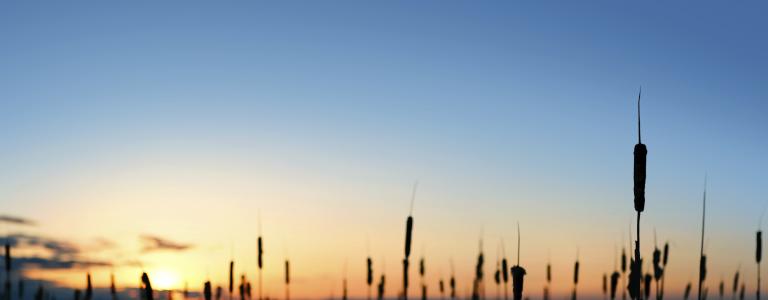Water and Land Management in the Bioeconomy
IISD’s unique approach to bioeconomy implements watershed and land management is an integrated approach to address multiple challenges.
IISD’s unique approach to bioeconomy implements watershed and land management in an integrated approach and from a bioeconomy perspective to address the multiple challenges of nutrient loading to aquatic systems, flooding and drought, sustainable agriculture, renewable energy and economic development.
One of the fundamental insights underlying IISD’s Lake Winnipeg Bioeconomy Project is that phosphorus, the nutrient responsible for fouling Lake Winnipeg and other aquatic ecosystems, is also a scarce and valuable resource critical to agricultural production and global food security, and a driver for the bioeconomy. A bioeconomy is an economy that integrates sustainable plant-based materials for renewable products and fuel. In IISD’s unique integrated approach, multiple environmental, economic and social benefits are gained rather than focusing on issues in isolation and at cost. Land and watershed management includes economic gain, and economic growth is not carried out at the expense of the environment.
IISD’s research through the award-winning Netley-Libau Nutrient-Bioenergy project demonstrated that harvested cattail, a large emergent wetland plant, can be used for watershed nutrient management and as a source of biomass for industry. Harvesting this “ecological biomass” (i.e., cattail) permanently removes the nutrients (i.e., phosphorus) taken up during growth and stored within the plant, and this biomass is then utilized for solid fuel, biocarbon and higher-value biofuels, biogas and bioproducts.
Over the past four years, IISD has expanded and generalized the concept at a watershed scale to harvest cattail and other ecological biomass as a component of applied watershed management. In 2014, the primary focus in the the third year of commercial-scale harvesting at the Pelly’s Lake (Manitoba) water retention site was on commercial-scale processing of biomass for solid fuel. The ban on the use of coal for space heating in Manitoba increased demand for processed biomass fuel, where there is currently a lack of production. Through the Bioeconomy project, IISD and industry partners are harvesting and producing commercial volumes of compressed low-carbon biomass fuel products for coal replacement and carbon offsets, while integrating “ecological biomass” to address mandates to reduce phosphorus loading to Lake Winnipeg. Wetlands also play an important role in terrestrial carbon sequestration. An extension of the harvesting research looks at the benefits/impacts of harvesting to carbon storage and methane reduction in harvested sites. Major greenhouse gases (GHGs) of concern include carbon dioxide, as well as methane and nitrous oxide, which have respective global warming potentials 21 and 298 times higher than carbon dioxide. Harvesting and removal of biomass may play a role in reducing more potent GHG emissions. IISD is also collaborating with the City of Winnipeg as an urban example of processing cattail and grasses harvested as part of city maintenance.
As a result of IISD's ongoing research, biomass harvesting is integrated in the Manitoba Surface Water Management Strategy and management protocols of water retention projects in Minnesota and North Dakota. Storing water on the land for flood and drought management also captures nutrients and provides excellent conditions to grow cattail. IISD is also collaborating in Germany and the Netherlands on similar water retention and biomass harvesting research for replication of bioeconomy concepts internationally. In Manitoba, the focus is phosphorus and biomass energy, but in Germany, it is biodiversity and sustainable biomass; in China, it is phosphorus and pulp and paper; and in Africa, it is alternative energy, water conservation and economic development.
Latest
You might also be interested in
Fish Forward: Protecting Manitoba's fishery way of life
Join us in protecting Manitoba's fishery way of life.
Scientists from Two Continents Working Together to Improve the Health of the African Great Lakes
World-class scientists and researchers from across North America and Africa are putting their heads together to tackle some of the most pressing issues facing the African Great Lakes today.
AquaHacking Lake Winnipeg
We are challenging young innovators to team up and develop new and innovative solutions to tackle urgent freshwater issues.
Sustainable Food Systems in Canada
In 2021, a team of IISD experts completed an internal exercise that sought to map out a path for sustainable food systems in Canada.


